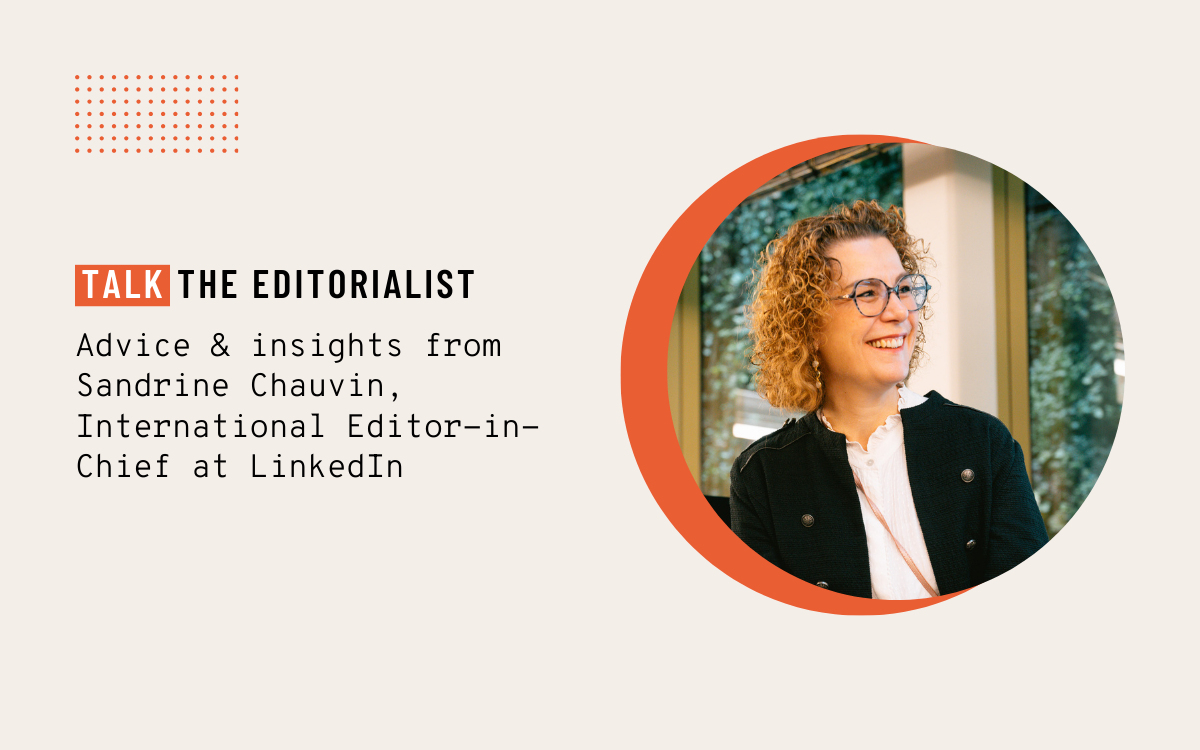Best brand podcasts & why they succeed
There’s no doubt about it: brand podcasts have been a roaring success. Today, it’s a format that’s becoming an integral part of companies’ global communication strategies—both BtoC and BtoB. And it’s been growing. In 2022, the number of listeners worldwide reached a whopping 424.2 million, and by September 2023, it had already risen by an impressive 9.5% to 464.7 million! This trend shows no signs of slowing down. The market is growing, and this trend is set to continue, not only in the United States, but also in Europe.
Want to create or relaunch brand podcasts?
4 key factors and good examples of branded podcasts
1. Quality of content
Content is the foundation of successful branded podcasts. Listeners are looking for quality content that offers them something new, informative, entertaining, etc. When you start thinking about the storyline of your podcast, you must have your objectives in mind and a good knowledge of your audience. What are their interests? Their needs? What type of content do they like? Once you know your target audience, you can start developing concept ideas that meet your future listeners and your objectives. It’s the perfect equation.
If your audience is professional and you want to provide information on your sector, use formats such as interviews with experts or discussions on topical subjects in your industry. If your target audience is the general public, and you wish to raise awareness of a product, use lighter, humorous or offbeat content. Create quality content and you’ll attract and retain your audience. Be authentic.
Two examples of branded podcasts with original content
- SAFRAN with “Ready To Fly !“
Airlines say that fear of flying affects between 25% and 33% of travellers. In this 6-episode mini-series to be released in July 2023, Safran is taking the opportunity to communicate its know-how and technological innovations through the voice of Inès, an engineer at the aerospace equipment manufacturer. The series is performed by actors who add a touch of humour to the content.
- Merck with “Talking Pineapples”
This show brings together experts and utilizes her own insights to demystify the science behind fertility and provide practical advice. Recognizing that each IVF journey is distinct, the podcast strives to offer diverse stories from both patients and specialists in the field.
2. Format, duration and frequency of publication
Each of these three elements is important. First, the format. This could be an interview, the telling of a story, a round-table discussion, and so on. Stick to a format and keep it consistent for the majority of episodes. The same applies to the duration. Even if it’s not to the minute, keep the length of all the episodes similar. Podcasts can be very short (under 5 minutes) or very long (over two hours). The only compass that should guide you is your content and the audience you want to reach.
Regularity is essential to keep listeners engaged. Irregular publication frequency will lead to a loss of interest and a drop in the number of subscribers. The consistency of these three factors will create an expectation and a habit in the listener, which will help to increase engagement.
Two examples of branded podcasts with a good format and good regularity
- Marriott Bonvoy with “Travel by design”
Since the end of 2022, The Travel by Design podcast offers insights into the creative decisions involved in designing some of Marriott’s most successful hotels. It features interviews with leading designers in the hotel industry, exploring the trends and innovations that shape the look and feel of hotels
- Behind the tech from Microsoft
Since May 2018, “Behind the Tech” has been offering listeners the opportunity to engage with an impressive array of technology experts, innovators and pioneers. Microsoft CTO Kevin Scott provides listeners with exclusive access to AI experts, computer scientists, authors, musicians, digital leaders, bioengineers and neuroscientists who have made significant contributions to the field of technology.
3. Brand identity
Your podcast’s differentiation will be defined by a number of elements. These include its name, the presenter’s tone, the soundtrack (introductory music, jingle, etc.), the graphics (thumbnail, different banners used by web hosts), and the theme of the subjects covered in each episode. This theme must align with the company’s values and mission. Your brand identity will help you create consistency between your podcast content and your company’s brand image.
Two examples of branded podcasts with a real brand identity
- BMW with Hypnopolis
In the summer of 2020, BMW made its mark with the launch of the Hypnopolis podcast, a true science fiction thriller. This radio show is distinguished by its futuristic and interactive nature. The soundtrack for the first season of Hypnopolis was written by the famous Hollywood composer Hans Zimmer. For season 2, he has created specific sounds for the electric vehicles featured in the podcast. The second season, released in 2021, is by British writer Robert Valentine and features a notable innovation: listeners can use short voice commands to influence the course of events. The story evolves according to the decisions made, providing a unique and highly engaging experience for the listener.
- The Sauce by McDonald
When a long-forgotten McDonald’s sauce gets a surprise shoutout from a popular TV show, the company’s team gets to work immediately to recreate the old recipe that fans are demanding. The success of “The Sauce” made the iTunes’ top-100 podcast chart!
4. Distribution, communication and media coverage
Finally, companies embarking on podcasting often overlook the most important success factors. From the outset, you must define your distribution strategy. Choose a host, such as Acast or Ausha, and then distribute your episodes on all the available platforms. Don’t limit yourself to Apple or Google podcasts. Spotify and Deezer are the key players, as is YouTube, which broadcasts many podcasts (without necessarily requiring a video version).
Once you’ve got excellent content, the format you want, a strong brand identity, and you’ve chosen your web host and published your first episode, the next step is to communicate! It’s virtually impossible to get the word out about a podcast without a good communications strategy these days. Edit extracts from an episode which you can then broadcast on social networks in the form of a teaser. Publicise your podcast in your newsletter. Create a page on your website featuring your episodes. This will boost your SEO!





